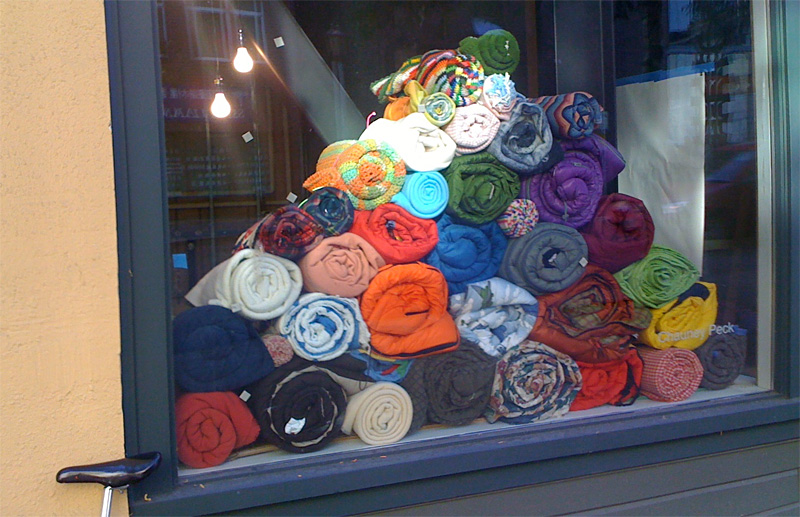Back in June, Howard House became yet another casualty of Pioneer Square’s hard times and the clouded arts climate in general. But what’s this? A quilt-maker has suddenly appeared in that sad, vacant space. Bright textiles and T-shirts adorn the walls. Yet neither Luke Haynes nor the 11 other artists in the Storefronts Seattle program are paying any rent; downtown landlords are providing the space gratis. The project launched on the most recent First Thursday, and the results were uneven—seen from the sidewalk, most of the spaces were dusty and empty, not exactly flattering to simple displays of work by solid artists like Dan Reeder, Ingrid Lahti, and Chris Engman. Set behind glass and locked doors, and limited to only frontal viewing, these installations aren’t likely to generate much pedestrian traffic—one important goal of the open-ended program. (Above, Chauney Peck has piled sleeping bags that will later be given to the homeless.) But some of the storefronts, like the former Howard House (where Haynes has set up his loom), are being used for active studio spaces and residencies, which is much more appealing. In the ID, Charles Martin‘s Seattle Pinball Museum Project is an instant hit on Maynard; his vintage machines’ cheerful clamor pulls you in the door to play. Around the corner on Jackson, the VIDEA collective hopes to set up shop by the next First Thursday. Says an optimistic Scott Bennett (aka VJ Scobot): “We’ll have some various displays in the windows. I’m glad we’re doing it the winter months, because it’ll be dark at night.” By day, he and his five cohorts will use the studio space and offer classes and workshops. In that spirit, already up and running is Dora Taylor‘s King Street after-school architecture workshop for kids. Maybe by the time they’ve got their master’s degrees, the economy will have jobs for them.
The Fussy Eye: Practical Attractions
Landlords sanction artists squatting in Pioneer Square and the ID.








